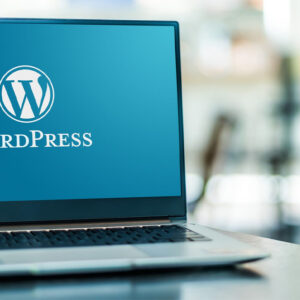Running a successful e-commerce business today requires more than just selling on a single platform. Customers shop across multiple channels—Amazon, eBay, Walmart, Shopify, and more. To meet this demand and deliver products efficiently, sellers need reliable fulfillment solutions that can handle orders from all these sources. That’s where Amazon Multi-Channel Fulfillment (MCF) comes in.
MCF allows sellers to use Amazon’s advanced logistics and warehouse network to fulfill orders placed not only on Amazon but on other platforms too. This article will explore how MCF works, its benefits, how to integrate it into your business, and best practices for leveraging it to power an omnichannel sales strategy.
What is Amazon Multi-Channel Fulfillment (MCF)?
Amazon Multi-Channel Fulfillment is a program offered by Amazon that lets sellers store inventory in Amazon’s fulfillment centers and use Amazon’s delivery network to ship orders to customers from multiple sales channels. This means sellers can fulfill orders from their own websites, social media shops, and other e-commerce platforms using Amazon’s infrastructure.
While Fulfillment by Amazon (FBA) is limited to Amazon orders, MCF goes a step further by extending the fulfillment service beyond Amazon. It offers flexible shipping speeds and helps businesses maintain fast, reliable delivery without managing logistics themselves.
Why Omnichannel Sales Matter?
Modern consumers don’t stick to one platform. They might discover a product on Instagram, compare prices on Amazon, and eventually buy it from a Shopify store. Omnichannel selling ensures your products are present wherever your customers are looking.
An effective omnichannel strategy helps:
- Increase brand visibility
- Drive more traffic and sales
- Improve customer experience and convenience
- Build brand loyalty
But to deliver this experience seamlessly, fulfillment has to be just as flexible and dependable. That’s where MCF becomes crucial.
Key Features of Amazon MCF
- Multi-Platform Support MCF supports orders from many channels including Shopify, BigCommerce, WooCommerce, Walmart, eBay, and custom websites.
- Fast Shipping Options Sellers can choose Standard (3–5 business days), Expedited (2 business days), or Priority (1 business day) delivery.
- Inventory Syncing Amazon syncs inventory across platforms, so stock levels remain consistent and sellers avoid overselling.
- Reliable Logistics Orders are fulfilled using the same world-class infrastructure Amazon uses for its own deliveries.
- Brand-Neutral Packaging (Optional) Sellers can opt for plain packaging instead of Amazon-branded boxes, creating a consistent brand experience.
Benefits of Using MCF for Omnichannel Fulfillment
- Streamlined Operations With a single fulfillment solution, sellers can manage inventory and shipping from one dashboard.
- Faster Delivery Amazon’s delivery network covers the entire U.S. and many international markets, ensuring quick deliveries.
- Reduced Overhead No need to rent warehouse space or hire a dedicated logistics team.
- Improved Customer Experience Fast, accurate shipping builds trust and increases repeat purchases.
- Scalability As your business grows across channels, Amazon’s fulfillment system scales with you.
How to Set Up Amazon MCF
Setting up MCF involves a few simple steps:
- Enroll in Fulfillment by Amazon (FBA) MCF uses the same inventory as FBA. First, sign up for FBA and send your products to Amazon’s warehouses.
- Connect Your Sales Channels Integrate MCF with platforms like Shopify or use apps like WebBee, Bytestand, or Amazon’s MCF API to automate order transfers.
- Enable Multi-Channel Fulfillment Settings Choose your preferred shipping speeds and packaging options.
- Start Processing Orders When a customer places an order on your non-Amazon store, MCF picks, packs, and ships the item directly.
Integrating MCF with Popular Platforms
- Shopify: Use Amazon’s official MCF app or third-party apps to sync inventory and route orders.
- WooCommerce: Integrate using plugins like WebBee or CedCommerce.
- BigCommerce: Use integration tools to connect your BigCommerce backend to Amazon MCF.
- Walmart: Manually submit MCF orders or automate using middleware tools.
Common Challenges and How to Overcome Them
- High Fulfillment Costs MCF fees can be higher than using your own warehouse. However, the cost savings in time, scalability, and speed often outweigh this.
- Stockouts Not separating inventory between FBA and MCF may cause stockouts. Plan inventory allocation carefully.
- Packaging Issues If you use Amazon-branded packaging, it might confuse customers. Opt for unbranded packaging to maintain your store’s identity.
- Platform Compliance Some marketplaces like Walmart discourage using Amazon for fulfillment. Use neutral packaging and check platform rules.
Best Practices for Maximizing MCF
- Use Unbranded Packaging: Ensure consistency across all channels by avoiding Amazon logos.
- Forecast Demand: Maintain enough inventory at Amazon to meet demand across all platforms.
- Automate Order Routing: Use integration tools to minimize manual work and reduce errors.
- Monitor Performance: Track fulfillment speed, customer feedback, and costs regularly.
- Stay Compliant: Ensure your use of MCF aligns with each platform’s terms of service.
Real-World Example
Imagine a small business selling fitness gear on Amazon, Shopify, and TikTok Shop. By using MCF:
- They ship all orders through one system.
- Customers on Shopify receive packages just as quickly as those on Amazon.
- The seller avoids the complexity of running multiple fulfillment centers.
- As their brand grows, they can continue adding new sales channels without worrying about logistics.
Comparing MCF with Other Fulfillment Options
| Feature | MCF | Third-Party Logistics (3PL) | Self-Fulfillment |
| Speed | Fast | Varies | Slower |
| Cost | Moderate | Varies | Lower upfront, higher over time |
| Automation | High | Medium | Low |
| Scalability | Excellent | Good | Limited |
| Branding | Optional unbranded | Customizable | Fully controllable |
Is Amazon MCF Right for Your Business?
MCF is ideal for businesses that:
- Sell on multiple platforms
- Want to simplify logistics
- Need reliable and fast delivery
- Are scaling rapidly and need fulfillment that grows with them
However, if your brand relies heavily on custom packaging or if you sell on marketplaces that restrict Amazon fulfillment, MCF might need to be used strategically.
Final Thoughts
Amazon Multi-Channel Fulfillment can be a game-changer for businesses seeking to establish a strong omnichannel presence. With powerful logistics, seamless integration, and consistent performance, MCF helps sellers deliver a top-tier customer experience across platforms.
By understanding its features, potential challenges, and implementation process, sellers can make informed decisions that position their brand for long-term growth in today’s competitive e-commerce landscape.
As customer expectations continue to rise, having a fulfillment strategy that matches the speed and scale of demand is essential. MCF offers that capability—and much more.
FAQs:
1. What is Amazon Multi-Channel Fulfillment (MCF)?
Amazon MCF is a service that allows sellers to use Amazon’s fulfillment centers to store, pick, pack, and ship orders from sales channels outside Amazon, such as Shopify, eBay, Etsy, or your own website.
2. How does MCF support omnichannel sales?
MCF enables sellers to manage inventory in one place while fulfilling orders across multiple platforms. This streamlines operations, reduces delivery time, and ensures a consistent customer experience across channels.
3. Do I need to sell on Amazon to use MCF?
No, you do not need to sell on Amazon to use MCF. Sellers can use MCF independently to fulfill orders from other platforms, as long as their products are stored in Amazon’s fulfillment centers.
4. What sales channels are compatible with Amazon MCF?
MCF supports orders from a wide range of channels including Shopify, WooCommerce, BigCommerce, Wix, eBay, Etsy, and custom websites. You can also integrate via API or third-party tools like WebBee or Pipe17.
5. How are MCF orders shipped?
Amazon ships MCF orders using its vast logistics network. Sellers can choose from three shipping speeds: Standard (3–5 days), Expedited (2 days), and Priority (1 day).
6. Are Amazon-branded boxes used for MCF shipments?
By default, MCF uses Amazon-branded packaging. However, sellers can opt for “unbranded packaging” (blank boxes) for an additional fee, ideal for a more neutral customer experience.
7. What are the fees for using MCF?
MCF charges include storage fees (monthly, based on space used) and fulfillment fees (per order, based on item weight and shipping speed). Pricing is transparent and available on Amazon’s MCF fee schedule page.
8. Can I track my MCF orders?
Yes, MCF provides tracking numbers for all shipments, which can be shared with customers. You can monitor delivery progress from your MCF dashboard or integrated platforms.
9. How do returns work with MCF orders?
MCF allows you to manage returns manually or through Amazon. You can instruct customers to return products to an Amazon fulfillment center and restock eligible items.
10. Is inventory synced across Amazon and other sales channels with MCF?
MCF does not automatically sync inventory across platforms. To keep inventory levels consistent, sellers should use third-party inventory management software or integrate their systems using Amazon’s Selling Partner API.




